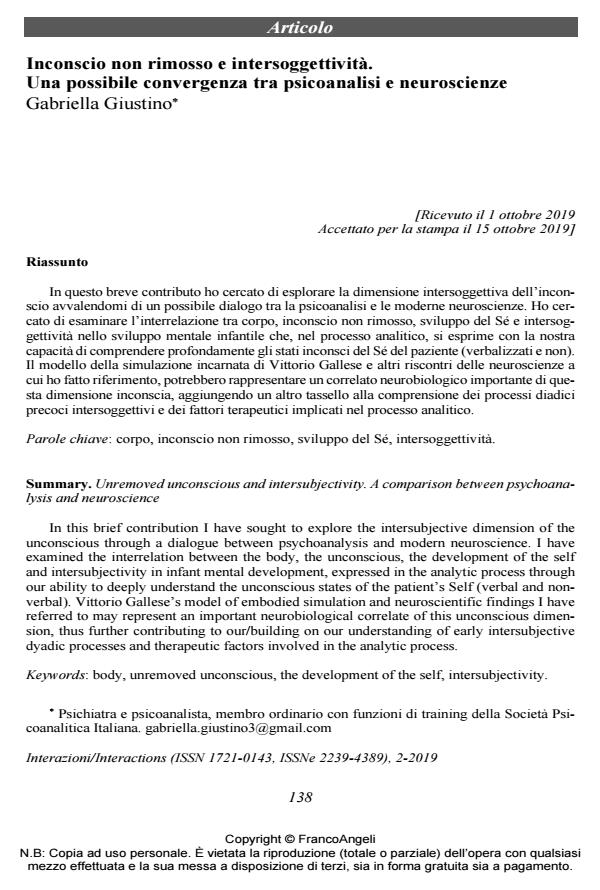Unremoved unconscious and intersubjectivity. A comparison between psychoanalysis and neuroscience
Journal title INTERAZIONI
Author/s Gabriella Giustino
Publishing Year 2019 Issue 2019/2
Language Italian Pages 8 P. 138-145 File size 140 KB
DOI 10.3280/INT2019-002009
DOI is like a bar code for intellectual property: to have more infomation
click here
Below, you can see the article first page
If you want to buy this article in PDF format, you can do it, following the instructions to buy download credits

FrancoAngeli is member of Publishers International Linking Association, Inc (PILA), a not-for-profit association which run the CrossRef service enabling links to and from online scholarly content.
In this brief contribution I have sought to explore the intersubjective dimension of the un-conscious through a dialogue between psychoanalysis and modern neuroscience. I have exa-mined the interrelation between the body, the unconscious, the development of the self and intersubjectivity in infant mental development, expressed in the analytic process through our ability to deeply understand the unconscious states of the patient’s Self (verbal and nonverbal). Vittorio Gallese’s model of embodied simulation and neuroscientific findings I have referred to may represent an important neurobiological correlate of this unconscious dimension, thus further contributing to our/building on our understanding of early intersubjective dyadic pro-cesses and therapeutic factors involved in the analytic process.
Keywords: Body, unremoved unconscious, the development of the self, intersubjectivity
- Micro e macro cambiamento nel processo psicoterapico: un tentativo di ricerca Mauro Ambrosini, Marina Bertoni, Alice Faccini, Daniela Maggioni, Paolo Vassallo, in SETTING 48/2024 pp.77
DOI: 10.3280/SET2024-048003
Gabriella Giustino, Inconscio non rimosso e intersoggettività. Una possibile convergenza tra psicoanalisi e neuroscienze in "INTERAZIONI" 2/2019, pp 138-145, DOI: 10.3280/INT2019-002009